The philodendron paraiso verde stuns with colorful green and yellow variegated leaves. This guide covers its light, water, soil and humidity needs for healthy growth indoors.
The philodendron Paraiso Verde is a unique and stunning tropical plant. Its broad, elongated leaves feature a beautiful combination of dark green and bright yellow to lime green variegation.
This eye-catching philodendron is a natural hybrid that originated in the jungles of South America. As a houseplant, it brings a taste of the exotic rainforest right into your living space.
Beyond its vivid foliage, the Paraiso Verde also boasts an upright, vining growth habit. It can trail along the ground, climb a trellis, or cascade beautifully from a hanging basket.
While not as common as some other philodendron varieties, the Paraiso Verde is growing in popularity thanks to its tropical flair. If you’re looking to add some lush greenery with a twist, this vibrant plant may be just what you need.
Like most philodendrons, the Paraiso Verde is relatively easy to care for once you understand its basic needs. This guide covers all the essentials for keeping it healthy and thriving indoors.
Light Requirements
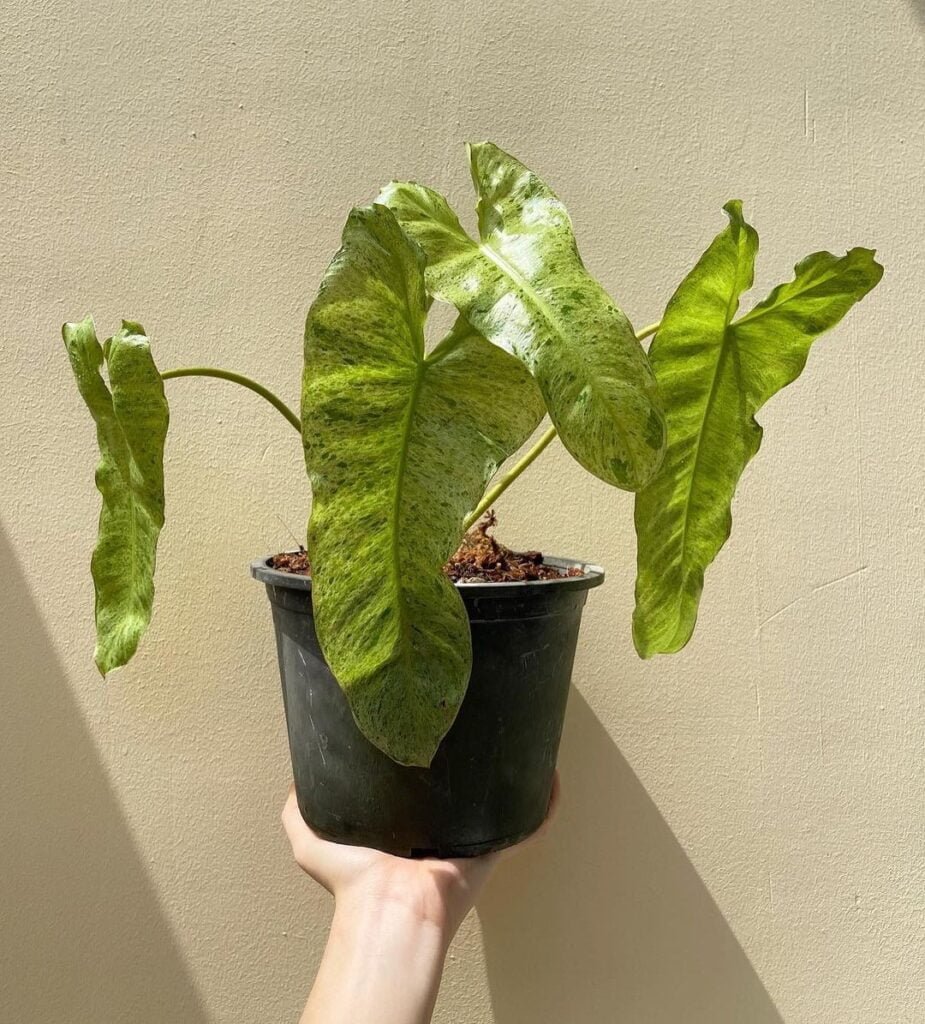
The philodendron Paraiso Verde can adapt to a range of light conditions but does best with bright, indirect light. Direct sun burns and fades the colorful variegation.
An east or west-facing window that receives 4-6 hours of filtered sunlight each day is ideal. You can also situate the plant a few feet back from a south window with sheer curtains.
Lower light causes the plant to become leggy and lose its bright coloration over time. The variegated leaves may revert completely green as well.
If you struggle with sufficient natural light indoors, consider supplementing with a full-spectrum grow light. Place it 6-12 inches from the plant and leave lights on for 12-16 hours per day.
Watering Needs

Like most philodendrons, the Paraiso Verde prefers consistently moist soil. Allow the top inch or two of potting mix to dry out before watering again.
The best way to determine if your plant needs water is to check the soil moisture with your finger. If the top portion feels dry, it’s time to thoroughly soak the potting mix until excess moisture drains from the bottom.
During the warmer spring and summer months, you’ll likely need to water every 5-7 days. In winter when growth slows, allow the top 25-50% of soil to dry before watering.
Always use tepid water rather than cold to avoid shocking the plant. And be sure to discard any excess drained moisture to prevent soggy soil conditions.
Signs that your Paraiso Verde is underwatered include wilting, curling leaves and very dry potting medium. Yellowing lower leaves and potential root rot can result from overwatering.
Temperature and Humidity
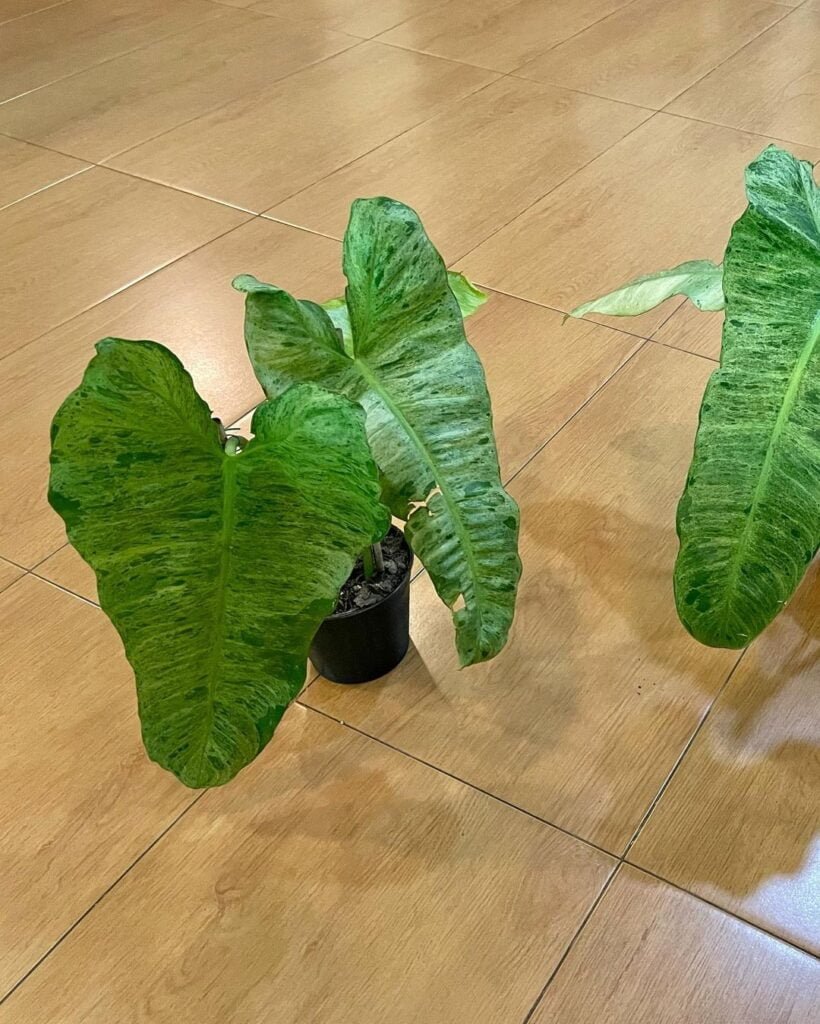
Being native to South American rainforests, the philodendron Paraiso Verde thrives in warm, humid conditions typical of its natural habitat. The ideal temperature range is 65-85°F.
It can tolerate typical household temperatures down to around 55°F in winter but prefers warm, consistent environments year-round.
Higher humidity of at least 40-50% encourages lush, vibrant foliage growth and deters pests like spider mites. Most homes are too dry for these tropical plants.
The easiest way to increase humidity is through regular misting with a spray bottle of tepid water. Be sure to mist in the mornings to allow the leaves to dry before nightfall.
You can also set the plant on a pebble tray filled with water. As it evaporates, it increases moisture around the plant. Or use a small humidifier nearby.
Avoid placing your philodendron Paraiso Verde near cold drafts, heat vents or excessive heat sources as these can cause stress and damage.
Soil Requirements
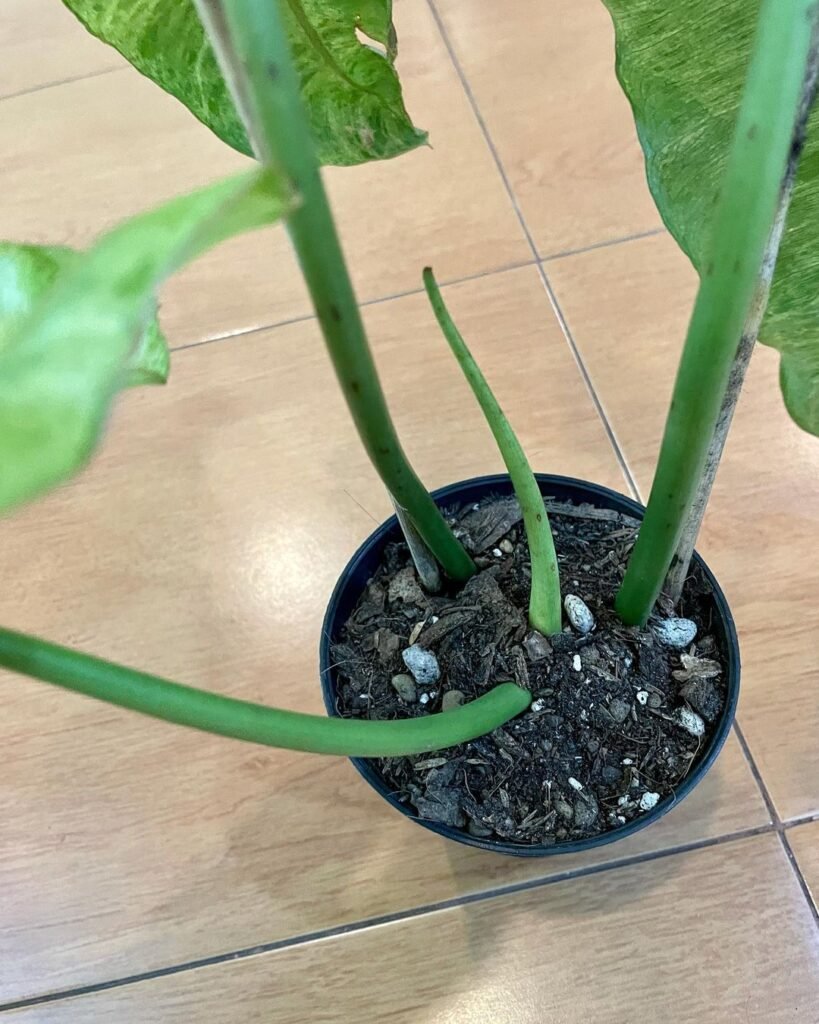
Like most aroids, the Paraiso Verde philodendron needs a loose, very well-draining soil mix. Heavy, dense potting mixes lead to waterlogged conditions and root rot issues.
An ideal potting medium contains the following:
- 1 part potting mix or peat moss
- 1 part orchid bark or perlite
- 1 part compost or worm castings
This creates an open, chunky mix that drains easily yet retains some moisture for the plant’s roots. You can also purchase a quality, well-draining tropical potting mix.
Amend a standard potting mix by adding one-third portions of orchid bark, perlite and compost to improve drainage and aeration.
Let the top inch or two of soil dry out between waterings. The potting mix should never remain soggy or saturated for extended periods.
Fertilizing
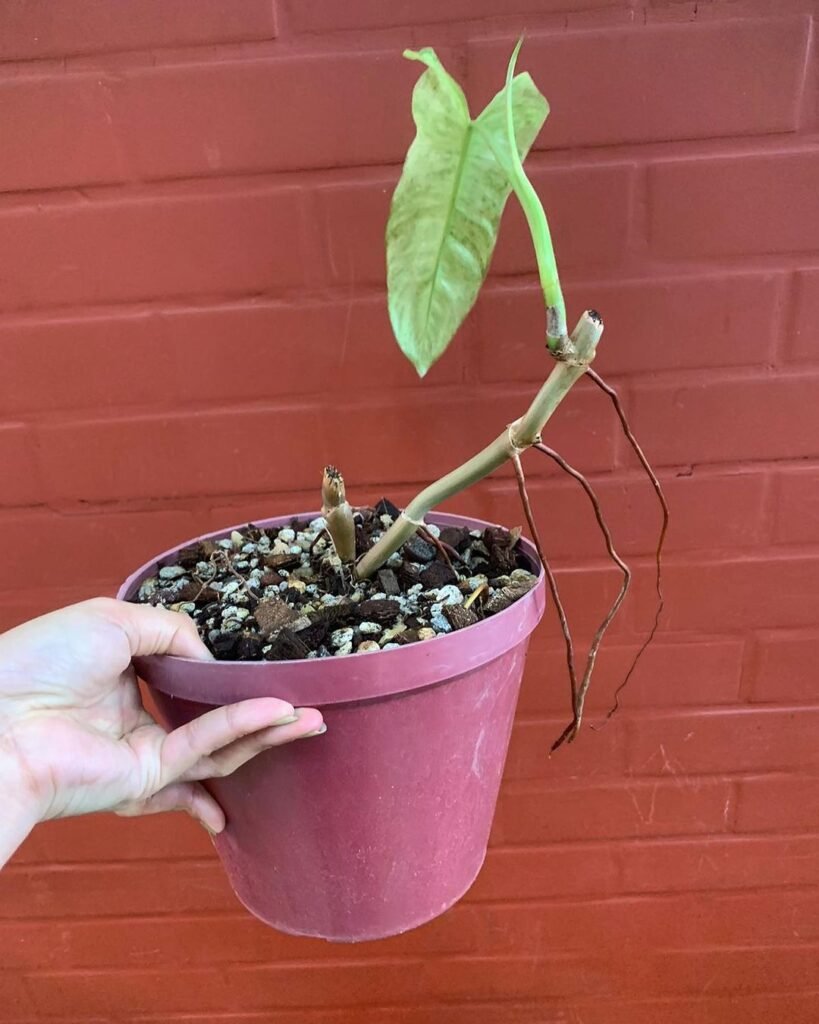
For optimal growth and vibrant variegation, feed your philodendron Paraiso Verde regularly during the warm months with a balanced fertilizer.
Use a general-purpose liquid houseplant fertilizer diluted to half strength and apply every 4-6 weeks from spring through summer. Alternate with periodic applications of worm compost or compost tea.
A slow-release granular fertilizer can also be used, providing steady nutrition over several months. But avoid over-fertilizing as excess salts damage the plant’s roots.
In fall and winter when growth slows, hold off on feeding. The plant requires very little supplemental nutrition during its rest period.
Encouraging lush, healthy leaves is key. Signs your Paraiso Verde may need fertilizer include wilting, pale or undersized new foliage, and stunted growth.
Potting and Pruning

The Paraiso Verde philodendron grows quite large over time, up to 4-6 feet tall and equally wide in its vining, trailing habit. It requires repotting every 2-3 years after outgrowing its current container.
In early spring before new growth emerges, transfer to a pot 2-3 inches wider than the previous one. Use a fresh, well-draining tropical potting mix.
You can also trim or prune off any dead, damaged or discolored leaves at this time using sharp, sterile pruners. Removing yellowing lower leaves also helps neaten the plant’s appearance.
To control size and encourage fuller growth, you can pinch out the newest growth points periodically. This stimulates lush branching and more compact growth rather than long, lanky vines.
Common Problems
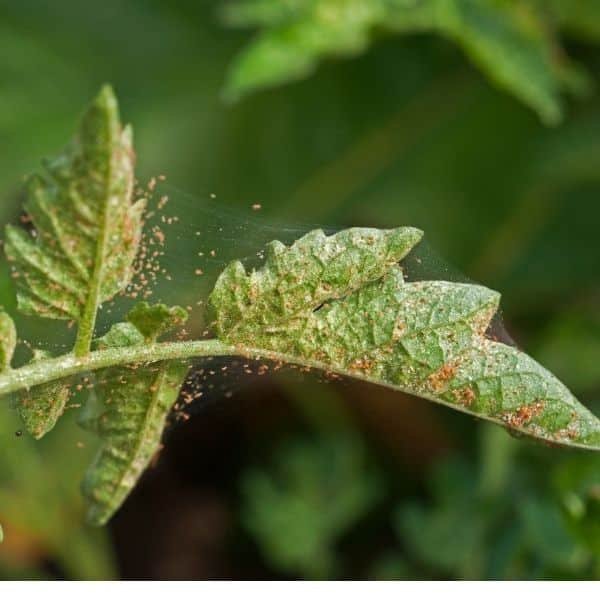
Like other philodendron varieties, the Paraiso Verde is generally low maintenance and avoids issues when provided with the right care. But there are a few potential problems to watch for:
Leaf discoloration: Yellowing leaves signal overwatering or soggy soil. Brown, crispy foliage means too much direct sun exposure. Adjust accordingly.
Loss of variegation: If new growth emerges solid green, increase light intensity. Lack of variegation also signals a nutrient deficiency, often nitrogen.
Wilting or stunted growth: These signs point to underwatering, low humidity or nutrient deficiencies. Increase moisture and feed with balanced fertilizer.
Pests: Spider mites, mealybugs and scale insects can attack the Paraiso Verde philodendron, often due to dry conditions. Use insecticidal soap or neem oil.
Root rot: Caused by overwatering and waterlogged soil that starves roots of oxygen. Let soil dry properly between waterings.
As long as you provide consistent moisture, bright indirect light, the right soil mix and humidity, your Paraiso Verde philodendron should thrive while avoiding any major issues.
Is The Paraiso Verde Philodendron Toxic?
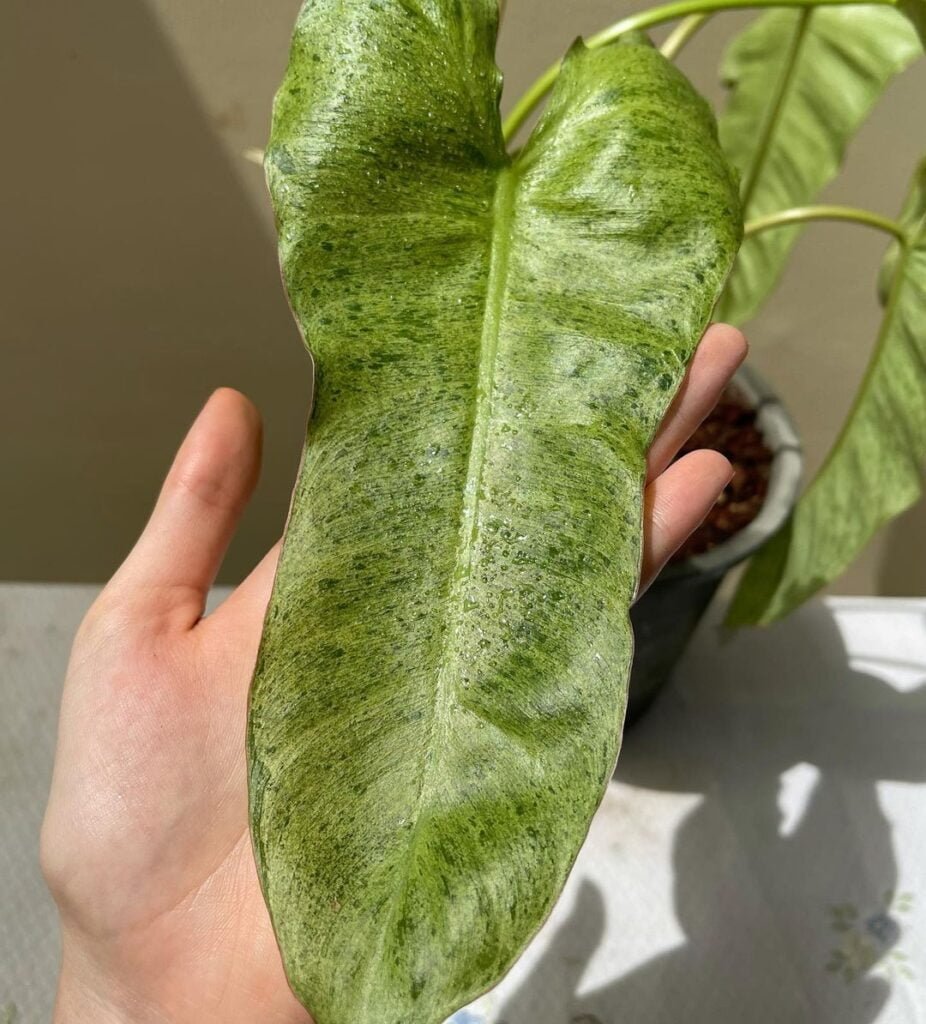
Yes, like all varieties of philodendron, the Paraiso Verde contains toxic compounds if ingested.
The plant contains insoluble calcium oxalate crystals in the leaves, stems and roots. These crystals can cause unpleasant symptoms like mouth and throat irritation, excessive drooling, vomiting and difficulty swallowing if chewed or swallowed.
While the level of toxicity is considered relatively low, it’s still wise to keep the paraiso verde away from curious kids and pets who may decide to nibble on the foliage. The sap can also potentially cause skin irritation in some individuals.
Exercise basic precautions like keeping this philodendron out of reach, teaching children not to eat any part of the plant, and washing your hands after handling it. With reasonable care, the beauty of the paraiso verde can still be enjoyed safely as a houseplant.
Where to Purchase

Thanks to its stunning variegated foliage, the philodendron paraiso verde is gaining popularity among indoor gardeners. However, it can still be tricky to find in some areas.
Your local nursery or garden center is worth checking, especially any specializing in tropicals, rare plants or houseplant varieties. But you’ll likely have better luck finding it available from online retailers.
Some of the top online sources for high-quality paraiso verde philodendrons include:
When ordering live plants online, look for established, mature specimens from reputable sellers. Check customer reviews and photos to ensure you’ll receive a high-quality plant.
Inspect any paraiso verde you purchase carefully before bringing it home, whether from a local nursery or mail order. Look for lush, vibrantly variegated leaves with no signs of pests, diseases or damage.
With its eye-catching foliage and versatile vining growth habit, the philodendron paraiso verde makes a stunning accent plant for any home or office. By providing the right light, soil, water and humidity, you can easily keep this vibrant tropical beauty thriving for years to come.
Pingback: https://gardenersschool.com/philodendron-parais...
Pingback: Philodendron Paraiso Verde Care Guide | Gardeni...